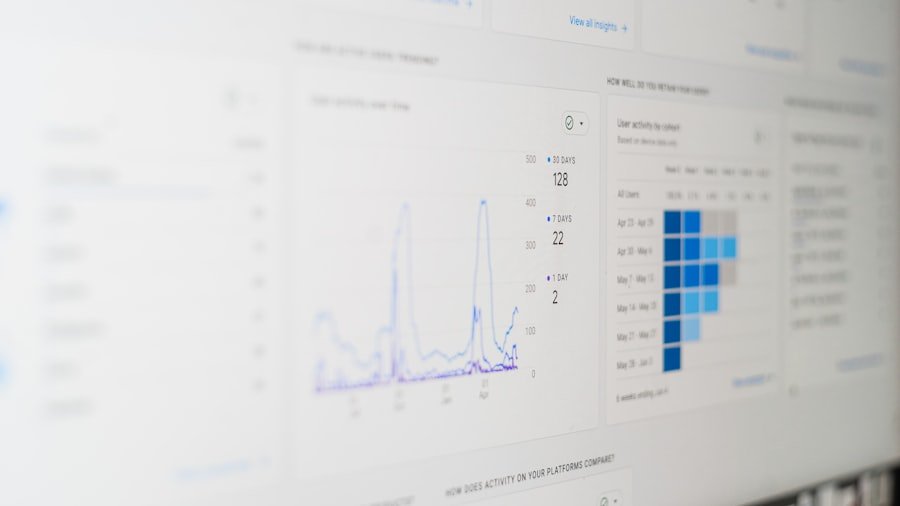In the digital age, data is the new oil, and web analytics is the refinery that transforms raw data into actionable insights. At its core, web analytics involves the collection, measurement, and analysis of web data to understand user behavior and improve website performance. This foundational understanding is crucial for marketers, CMOs, and business leaders who aim to enhance their online presence and drive conversions.
By leveraging web analytics, organizations can make informed decisions that align with their strategic goals. Web analytics tools, such as Google Analytics, Adobe Analytics, and others, provide a wealth of information about website traffic, user demographics, and engagement metrics. These tools track user interactions on a website, offering insights into how visitors navigate through pages, where they drop off, and what content resonates with them.
Understanding these basics allows marketers to identify opportunities for optimization and develop strategies that enhance user experience and drive conversions.
Key Takeaways
- Web analytics is the process of analyzing the behavior of visitors to a website.
- Key metrics for conversion rate optimization include bounce rate, average session duration, and goal completion rate.
- Data can be used to identify user behavior and patterns, such as common paths through a website or frequent drop-off points.
- A/B testing and multivariate testing are valuable tools for optimizing conversion rates by comparing different versions of a webpage.
- Web analytics can help identify barriers to conversion, such as confusing navigation or a lack of clear calls to action.
Identifying Key Metrics for Conversion Rate Optimization
To effectively optimize conversion rates, it’s essential to identify and focus on key performance indicators (KPIs) that align with your business objectives. Metrics such as conversion rate, bounce rate, average session duration, and click-through rate (CTR) are critical in assessing the effectiveness of your website. The conversion rate, in particular, is a direct reflection of how well your site persuades visitors to take desired actions—be it making a purchase, signing up for a newsletter, or filling out a contact form.
Moreover, segmenting these metrics by user demographics or traffic sources can provide deeper insights. For instance, if you notice a high bounce rate from mobile users but a lower rate from desktop users, it may indicate that your mobile site needs optimization. By honing in on these key metrics, marketers can prioritize their efforts and allocate resources effectively to areas that will yield the highest return on investment.
Utilizing Data to Identify User Behavior and Patterns

Understanding user behavior is paramount for any successful conversion rate optimization strategy. By analyzing data collected through web analytics tools, marketers can uncover patterns that reveal how users interact with their websites. For example, heatmaps can visually represent where users click most frequently, while session recordings can show the paths users take through your site.
This data not only highlights popular content but also uncovers potential pain points in the user journey. Additionally, cohort analysis allows marketers to track specific groups of users over time, providing insights into how different segments behave. For instance, new visitors may exhibit different behaviors compared to returning customers.
By identifying these patterns, businesses can tailor their marketing strategies to meet the unique needs of each segment, ultimately enhancing user experience and increasing conversion rates.
A/B Testing and Multivariate Testing for Conversion Rate Optimization
A/B testing and multivariate testing are powerful methodologies for optimizing conversion rates based on empirical data rather than assumptions. A/B testing involves comparing two versions of a webpage—Version A and Version B—to determine which one performs better in terms of conversions. This method allows marketers to test specific elements such as headlines, call-to-action buttons, or images to see which variation resonates more with users.
On the other hand, multivariate testing takes this a step further by allowing marketers to test multiple variables simultaneously. For example, you might test different headlines alongside various images and calls to action all at once. This approach provides a more comprehensive understanding of how different elements interact with each other and influence user behavior.
By systematically testing and analyzing results, businesses can make data-driven decisions that lead to significant improvements in conversion rates.
Using Web Analytics to Identify Barriers to Conversion
Identifying barriers to conversion is a critical step in optimizing your website’s performance. Web analytics can help pinpoint where users are experiencing friction in their journey. For instance, if analytics reveal a high drop-off rate on a particular page of your checkout process, it may indicate that users find the process confusing or cumbersome.
By addressing these barriers—whether through simplifying forms or enhancing navigation—businesses can significantly improve their conversion rates. Furthermore, analyzing user feedback alongside web analytics can provide additional context. Tools like surveys or feedback forms can capture qualitative data that complements quantitative insights from analytics.
By combining these two data sources, marketers can gain a holistic view of user experience and make informed adjustments that facilitate smoother conversions.
Leveraging Analytics to Optimize User Experience

User experience (UX) is at the heart of conversion rate optimization. By leveraging web analytics, businesses can gain insights into how users interact with their websites and identify areas for improvement. For example, if analytics show that users spend a significant amount of time on a specific page but do not convert, it may indicate that while the content is engaging, there may be issues with the call-to-action or overall layout.
Additionally, understanding user flow through your site can help identify bottlenecks that hinder conversions. If users frequently exit at a particular point in the funnel, it’s essential to investigate why this is happening. By optimizing these touchpoints—whether through clearer messaging or improved design—businesses can create a more seamless user experience that encourages conversions.
Personalization and Targeting with Web Analytics
In today’s competitive landscape, personalization is no longer optional; it’s essential for driving conversions. Web analytics enables marketers to segment their audience based on behavior, preferences, and demographics.
For instance, if analytics reveal that certain products are popular among a particular demographic, businesses can tailor their marketing campaigns to highlight those products specifically to that audience. Moreover, personalized experiences—such as product recommendations based on past behavior—can significantly enhance user engagement and increase conversion rates. By utilizing web analytics to inform personalization strategies, businesses can create more relevant experiences that not only meet user needs but also foster loyalty and repeat business.
Tracking and Measuring the Impact of Conversion Rate Optimization Efforts
Once conversion rate optimization strategies are implemented, tracking and measuring their impact is crucial for understanding effectiveness. Web analytics provides the tools necessary to monitor changes in key metrics over time. For example, after implementing A/B tests or redesigning a landing page, businesses should closely analyze conversion rates to determine if these changes have had the desired effect.
Additionally, setting up goals within web analytics platforms allows marketers to track specific actions taken by users—such as completing a purchase or signing up for a newsletter—providing clear indicators of success. By continuously monitoring these metrics and adjusting strategies accordingly, businesses can ensure they remain agile and responsive to changing user behaviors.
Integrating Web Analytics with Marketing and Sales Strategies
For web analytics to be truly effective in driving conversions, it must be integrated into broader marketing and sales strategies. This integration ensures that insights gained from analytics inform all aspects of marketing—from content creation to advertising campaigns. For instance, if analytics reveal that certain keywords drive significant traffic but have low conversion rates, marketers can adjust their content strategy to better align with user intent.
Furthermore, collaboration between marketing and sales teams is essential for leveraging analytics effectively. Sales teams can provide valuable feedback on lead quality based on insights gained from web analytics. By fostering this collaboration and ensuring alignment between teams, businesses can create a cohesive strategy that maximizes conversion opportunities.
The Role of Web Analytics in Continuous Improvement and Iterative Testing
Web analytics plays a pivotal role in fostering a culture of continuous improvement within organizations. The digital landscape is ever-evolving; therefore, businesses must remain agile and willing to adapt their strategies based on data-driven insights. By embracing an iterative testing approach—where strategies are continuously refined based on performance metrics—organizations can stay ahead of the competition.
This commitment to ongoing optimization not only enhances conversion rates but also improves overall user experience. As businesses gather more data over time, they gain deeper insights into user behavior patterns and preferences. This knowledge empowers them to make informed decisions that drive sustained growth and success.
Best Practices for Implementing Web Analytics for Conversion Rate Optimization
Implementing web analytics effectively requires adherence to best practices that ensure accurate data collection and meaningful analysis. First and foremost, it’s essential to define clear goals aligned with business objectives before diving into data collection. This clarity will guide your analytics strategy and help you focus on metrics that matter most.
Additionally, regularly auditing your analytics setup is crucial for maintaining data integrity. Ensuring proper tracking codes are in place and verifying that data is being collected accurately will prevent costly errors down the line. Finally, fostering a culture of data-driven decision-making within your organization will empower teams to leverage insights from web analytics effectively.
In conclusion, web analytics is an indispensable tool for optimizing conversion rates in today’s digital landscape. By understanding its fundamentals and leveraging data-driven insights across various aspects of marketing strategy—from identifying key metrics to personalizing user experiences—businesses can drive meaningful improvements in performance. As you embark on your journey toward enhanced conversion rates through web analytics, remember: the key lies not just in collecting data but in transforming it into actionable strategies that resonate with your audience.
Embrace this opportunity for growth and innovation; the future of your business depends on it.
A related article that delves deeper into this subject is “Marketing Analytics & Data Insights” available on Polayads. This article explores how data-driven insights can significantly impact marketing strategies and improve overall performance. By leveraging analytics, businesses can make informed decisions that lead to higher conversion rates. For more information, you can read the full article by following this link.
FAQs
What is web analytics?
Web analytics is the measurement, collection, analysis, and reporting of web data for the purpose of understanding and optimizing web usage.
What is conversion rate optimization (CRO)?
Conversion rate optimization (CRO) is the process of increasing the percentage of website visitors who take a desired action, such as making a purchase or filling out a contact form.
How does web analytics contribute to conversion rate optimization?
Web analytics provides valuable insights into user behavior, allowing businesses to identify areas for improvement and make data-driven decisions to optimize their websites for higher conversion rates.
What are some key metrics used in web analytics for conversion rate optimization?
Some key metrics used in web analytics for conversion rate optimization include bounce rate, average session duration, conversion rate, and goal completions.
What are some popular web analytics tools for conversion rate optimization?
Popular web analytics tools for conversion rate optimization include Google Analytics, Adobe Analytics, and Hotjar, among others.
How can businesses use web analytics to improve their conversion rates?
Businesses can use web analytics to identify high-performing and underperforming areas of their website, test different elements such as call-to-action buttons and page layouts, and track the impact of changes on conversion rates.



